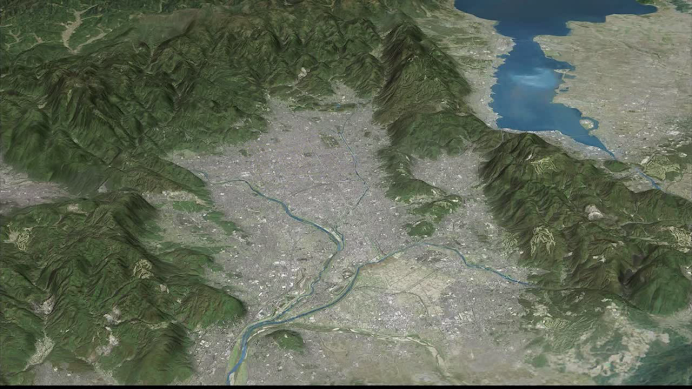
At the last meeting we discussed the 1. Ritsuryo Order 2. Fujiwara
Kyo 3. Heijo kyo, Nara's Capital and Todaiji's Vairocana.
Here is a summary of what we discussed in December and a few websites
connected with that discussion.
Ritsuryo Order.
Emperor Tenmu (672-686) ordered the writing of these
laws. Taiho Code was finished in 702.
In 718 these laws were updated in 20 volumes in the Yoro Code by
Fuhito no Fujiwara.
Basically the code established governance over the people,i.e.
how to get money from the land and how to supervise it. The code
also established clear relations between the ruling elite to make clear
their positions and to avoid violence during the passing of power.
Key points: 1. These laws were modeled on a Chinese system. 2. The
system did not always function according to the rules and often needed
modifications.
Composition of Ritsuryo in the Capital
1. A bureau to handle Shinto rituals
2. Advisory Council to the Emperor 3. 8 Ministries of State
4. Council of State Total Government Officials in Nara in 750 = 10,000
Composition of the Ritsuryo in the Land:
60 Provincial Headquarters (kokufu) with 550/600 district offices
supervising 4 million people in 4,000 townships
Kokufu had a staff in the hundreds and managed everything in that
province.
Kojiki and Nihon Shoki
Emperor Tenmu also set in motion the writing of the Kojiki finished
in 712 and
the Nihon Shoki completed in 720. Fortunately we can read a complete translation of the Kojiki at this website along with many other historical texts:
http://www.sacred-texts.com/shi/index.htm
Fujiwara kyo the first permanent capital in Japan, 694-710.
Previously: The ruler used the natal homes of his spouses as multiple palaces. Spouses tended to stay at or near their natal homes for several years after the marriage. As marriage alliances changed, it provided the ruler with another palace.
Before Fujiwara-kyo, construction style was largely thatch-roof and post-hole which rotted easily. The rules of avoiding pollution connected with death and small size of adminstration did not discourage movement.
Key Points of Fujiwara-kyo: Immigrant experts introduced geometrical
grid pattern for the city. Major gates and buildings used stone
foundations, mortise and tenon framing, and tile roofs.
Compromises: Shinto shrines and residences were built in rottable
style. Muliple palaces were maintained with summer residences or
regional capitals.
Archaeology of Fujiwara-kyo. Many stone structures have been
unearthed including a Sakafuneishi, and Matsuda Iwafune and a
sundial. Photos of these structures can be found here:
http://heritageofjapan.wordpress.com/inception-of-the-imperial-system...
Heijo kyo. Happy 1300 Anniversary. At Todaiji
there is the Great Buddha Statue. This can be called Vairocana Buddha
or Dainichi Buddha. It was the central Buddha of the Kegon Sutra.
Dainichi 大日如來 (Great Sun Buddha) is the translation of Sanskrit
“Vairocana,” while Birushana is the transliteration. Vairocana means
“belonging to / coming from the sunlight
http://www.onmarkproductions.com/html/birushana.shtml
Later Kukai connected Dainichi to Amaterasu. Vairocana became main god
of Shingon sect and was slightly modified concering mudra. This site
explains the different Shingon Vairocana and Mahavairocana which are
both the Dainichi Nyorai.
http://www.visiblemantra.org/vairocana.html


